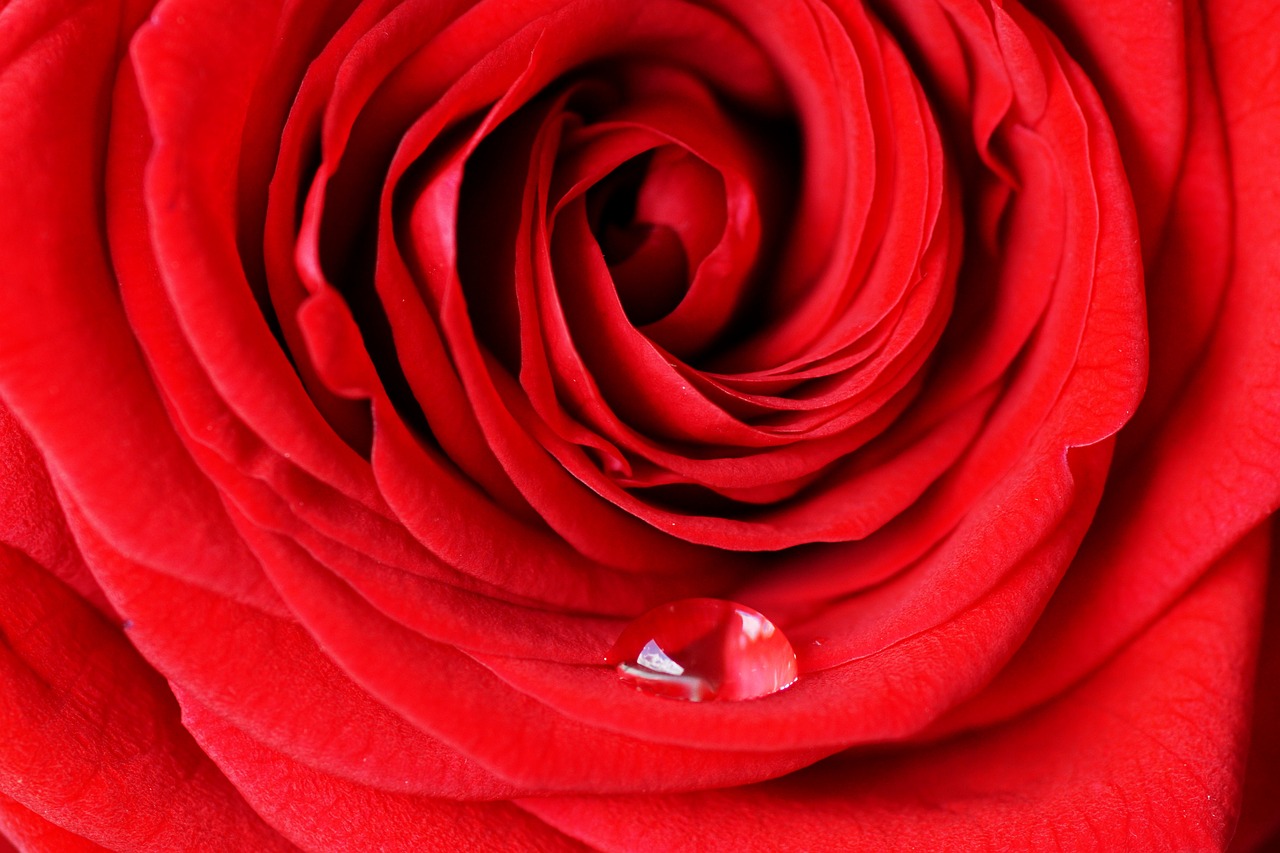The tradition of using roses to convey meaning dates back thousands of years, spanning cultures and continents. It is believed that the ancient Greeks were the first to associate roses with love and passion, as they believed that the flower grew from the blood of the goddess Aphrodite’s slain lover, Adonis. In medieval Europe, roses were not only a symbol of romantic love, but also of political power and royalty. The War of the Roses in 15th century England even derived its name from the symbols of the Houses of Lancaster and York – the red and white roses, respectively.
The significance of roses as a symbol of love and romance continued into the modern era, and today, roses are still one of the most popular flowers to give as a gift on Valentine’s Day or other romantic occasions. However, roses also have a wide range of other meanings and symbolism depending on their color and type. In the following sections, we will explore the meanings behind different rose colors and types, as well as their significance in various cultures around the world.
The Origins of Rose Symbolism
The use of roses to convey meaning can be traced back thousands of years across different cultures and continents. Roses have been associated with love, royalty, and political power in various societies throughout history. However, the origins of this symbolism remain unclear.
One theory suggests that the tradition of assigning meanings to roses began in ancient Greece, where roses were believed to be favored by the goddess of love, Aphrodite. Another theory suggests that the language of roses was popularized in medieval European courts, where giving and receiving roses with specific meanings became a common practice among nobility.
Regardless of their origins, the symbolism of roses continues to captivate people around the world. Understanding the meanings behind different colors and types of roses adds depth to this beloved flower, making it a powerful tool for expressing emotions and sentiments.
The Language of Roses
Roses have been a symbol of love and romance for centuries, but their language extends beyond just those emotions. The different colors of roses hold significant meaning, from red symbolizing passionate love to yellow representing friendship and joy. White roses are often associated with purity and innocence, while pink roses can convey gratitude and appreciation.
But it’s not just the color of the rose that holds meaning; the type of rose can also play a role in its symbolism. For example, hybrid teas are a classic and elegant rose that can represent beauty and refinement, while climbing roses symbolize growth and perseverance.
Regardless of the occasion, roses can be used to express a wide range of emotions and sentiments, making them a versatile and powerful symbol in culture and literature.
The Meanings of Rose Colors
Roses are a classic symbol of love and affection, but not all roses convey the same message. Each color of rose has a distinct meaning, making it important to choose the right rose for the right occasion. Red roses, for example, represent passion and love, while pink roses symbolize admiration and gratitude. Yellow roses are often associated with friendship and happiness, while white roses convey purity and innocence. If you’re looking to express sympathy, a bouquet of dark red roses may be appropriate, while orange roses are often given as a symbol of enthusiasm and desire.
It’s important to consider the meaning behind each color of rose before giving them as a gift, as using the wrong color could unintentionally send the wrong message. Additionally, combining different colors of roses in a bouquet can create a unique and personalized message, such as a mix of red and white roses to convey unity or a combination of pink and yellow roses to express joy and appreciation.
The Symbolism of Different Types of Roses
Each type of rose has its own unique symbolism and significance beyond just their color. Classic hybrid teas, with their large and beautiful blooms, represent elegance and romance. Floribundas, with their clusters of smaller flowers, symbolize friendship and gratitude. Climbing roses, as their name suggests, represent growth and upward movement, while rambling roses represent wildness and freedom.
English roses, also known as David Austin roses, are loved for their old-fashioned beauty and represent tradition and nostalgia. Meanwhile, tea roses symbolize luxury and refinement, as they were once used to create a rare and expensive tea made from their petals.
For a more mystical symbolism, consider the lavender-colored Blue Nile rose, which is believed to bring good luck and ward off evil spirits, or the green Rosa chinensis viridiflora, which is said to bring both good and bad luck depending on how it is paired with other flowers.
Roses in Art and Literature
Roses have long been a popular subject in art and literature, with their beauty and symbolism inspiring countless works throughout history. From romantic love poems to religious iconography, roses have been featured in a wide range of artistic expressions.
One of the most iconic examples of rose symbolism in art is the famous painting by Pierre-Joseph Redoute, “Les Roses.” This collection of botanical illustrations serves as a testament to the beauty and complexity of the rose, with each image showcasing a different variety of the flower and its unique characteristics.
In literature, roses have been a staple symbol for generations, with writers using the flower as a metaphor for everything from love and passion to purity and innocence. Perhaps the most famous example of roses in literature is William Shakespeare’s “Romeo and Juliet,” in which the two main characters declare their love with the immortal lines “What’s in a name? That which we call a rose / By any other name would smell as sweet.”
Through these depictions in art and literature, the rose has become a powerful symbol of love, beauty, and even life itself. Its enduring appeal and versatility make it a fitting emblem for everything from weddings and anniversaries to funerals and memorials.
The Cultural Significance of Roses
Roses are not just beautiful flowers but they also hold a special cultural significance in different parts of the world. In China, roses are associated with good fortune and happiness, and are often used during the Chinese New Year festivities. During this time, people decorate their homes with red roses and other flowers to bring good luck and prosperity. On the other hand, in the United States, the Rose Parade in Pasadena, California is a famous annual event that showcases the beauty and diversity of roses. This extravagant parade features floats decorated with roses, and attracts thousands of visitors from all over the world.
In some parts of Europe, roses are often associated with love and romance, and are given as gifts on Valentine’s Day and other special occasions. In France, roses have played an important role in the country’s history and culture. The country is famously known as the “City of Roses”, and hosts numerous rose festivals throughout the year.
Moreover, roses are also used in various religious and spiritual practices around the world. In some Christian teachings, roses are associated with the Virgin Mary and are sometimes referred to as “Mary’s Rose”. In Hinduism, roses are offered to the gods and are used during religious ceremonies and rituals.
Overall, roses have a rich and diverse cultural significance that transcends borders and is deeply intertwined with different traditions and beliefs around the world.
Conclusion
In conclusion, the symbolic language of roses is a fascinating and complex topic that spans cultures and centuries. By understanding the meanings behind different colors and types of roses, we can communicate our feelings more effectively and appreciate the deeper significance of this beloved flower. From ancient myths and legends to modern art and literature, the rose continues to captivate hearts and minds around the world. Whether you are giving roses to someone you love or admiring them in a garden, take the time to appreciate the history, culture, and symbolism behind this timeless and beautiful flower.










